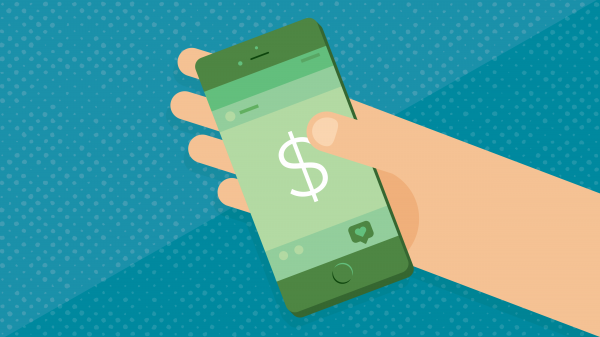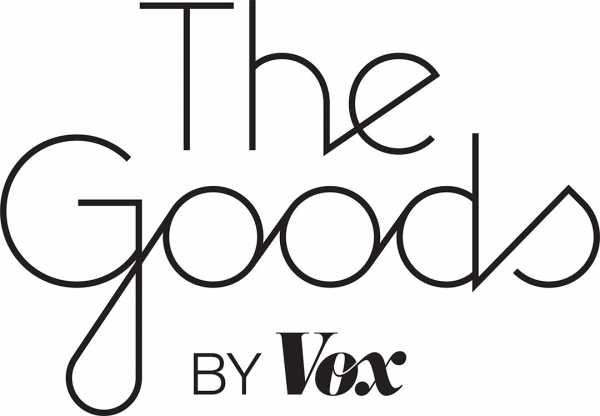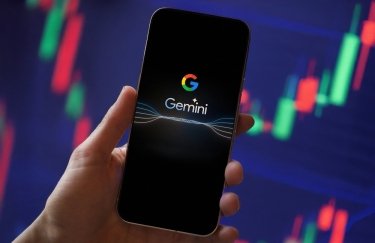
For sale: Instagram account, lightly used
In violation of the app’s terms of service, users are spending thousands of dollars buying accounts for their follower counts.
By
Emma Grillo
Feb 1, 2019, 7:00am EST
Share
Tweet
Share
Share
For sale: Instagram account, lightly used
tweet
share

“Beautiful or not?” captions a typical post on @fashions__ootd. The Instagram account posts photos of different outfits against a white background and asks its followers to comment with their opinions. A typical post features a carousel of photos of jeans and sweaters with a slew of growth-promoting hashtags. It’s common to see these sorts of niche interest profiles throughout Instagram, accounts that rely on generic pictures to build a following. A closer look at @fashions__ootd, though, will show something a little less common — in its bio, it advertises that it’s for sale.
The same is true for @ikpowervintage, which, until a few weeks ago, was advertising its for-sale status in its Instagram stories. @ikpowervintage posts photos of stylish young women, usually at the beach or in European cities, all edited with the same grainy filter. It’s racked up 33,000 followers, and a highlighted story on the page lists @ikpowervintage’s prices for shoutouts to other profiles — $5 for a post, $3 for a story.
Although Instagram’s terms and conditions strictly forbid users to “buy, sell, or transfer any aspect of your account (including your username),” accounts like these are sold on Facebook pages, in Instagram direct messages, and even on dedicated online marketplaces across the world. A single account can sell for thousands of dollars, depending on the size of its follower base. And an entire economy — of buyers, sellers, middlemen, professional flippers, and marketplaces — has sprung up around Instagram accounts.
Followers are what make Instagram, which reached 1 billion users in June 2018, so popular with buyers and resellers; a large audience can be translated into revenue by posting sponsored content, selling shoutouts on Instagram Stories, or selling products directly. For those willing to spend the cash upfront, buying an account that already has thousands of followers can ostensibly save a burgeoning memer or startup business the onerous process of building an audience.
While a similar moneymaking opportunity exists on YouTube, building a large Instagram following doesn’t require making original creative content. A YouTuber has to shoot and edit videos for their channel, which typically lends itself to a very recognizable and personal brand. An Instagram account runner, on the other hand, can repost pictures of tropical beach locations and gain a following in the tens of thousands without ever uploading a picture they themselves took.
These types of Instagram profiles, ones that post photos related to a theme rather than the individual user, are commonly referred to as “niche” or “theme” accounts by those involved in building, buying and selling Instagram pages. The opposite of niche accounts is personal accounts, where the content is mostly original photos and captions pertaining to the user’s daily life. These personal Instagrams may be where the most lucrative brand sponsorships happen, but niche accounts are where most of the buying and selling is taking place. A user can buy a niche account specializing in vegan food and continue to post content, including ads for their new vegan protein powder, without disrupting their theme.
Ilham Noor Habibie, a 20-year-old college student in Indonesia, lists his Instagram pages for sale on the Facebook page “Buy, Sell or Exchange [Group, Pages, Instagram, YouTube, Twitter and more]”. He started selling Instagram accounts at the beginning of 2018, and through Facebook Messenger, he told me that he sells Instagram accounts that are “mostly about public figures,” always with more than 5,000 followers.
The latest Instagram profile he posted on “Buy, Sell or Exchange” has 25,000 followers, and he listed it for $30. He uploaded a screenshot of the account with his post that showed a nearly blank account, with just one selfie of a young woman. “This is just additional work to meet my college needs,” he said, and estimated that last year he made about $700 selling 10 Instagram accounts.
Building a large Instagram following doesn’t require making original creative content
Habibie is just one of the 4,503 members of “Buy Sell or Exchange” trying to buy or sell social media accounts. The page is full of screenshots of various accounts, with posters detailing the number of followers they have and the price they’re asking for the account. While the Facebook page sells multiple forms of social media (per its name), Instagram accounts are by far the most common offering.
The amount of money Habibie has made selling accounts is on the low end of the market. A 23-year-old entrepreneur and installation technician from Ohio, who asked to be referred to by the name he releases music under, Ace Looney, estimated that he has sold 50 Instagram accounts in the past two years. While he reported selling some for as low as $30, the most lucrative account sold for $800. He had started out trying to build a large following on Instagram in order to promote his music, when others began offering to pay him to post shoutouts to their music accounts on his Instagram Stories, a common practice for musicians. As he learned more about the money to be made on Instagram, a mentor taught him how to sell accounts, and his business took off from there.
What Ace Looney’s mentor taught him wasn’t just how to find buyers through Instagram DMs and on Facebook pages, but how to buy low and sell high, flipping an Instagram account like one might a piece of real estate. Thor Aarsand, a 19-year-old social media influencer from Norway, is well-versed in the art of flipping Instagram accounts. In 2017, he sold his first account, one he had built from the ground up, for $400.
After his first successful sale, Aarsand began looking for quicker ways to turn a profit. “I found people that were selling accounts for cheap, I bought them from them, and then I went to Facebook.” He advertised the accounts on Facebook groups about Instagram, finding buyers who would make his investment worthwhile.
He would typically purchase an account for $500 to $1,000, and then flip it for upward of $2,000
He initially found accounts to sell by searching for popular hashtags on Instagram, like the names of Bollywood actresses, and then asked the users behind fan accounts if they had any other niche accounts they were willing to put up for sale.
Aarsand doesn’t flip accounts anymore because he finds the process too time-consuming, but said that while he was flipping, he would typically purchase an account with anywhere from around 50,000 to 100,000 followers for $500 to $1,000, and then flip it for upward of $2,000. Aarsand would try to flip accounts immediately, but if he couldn’t sell an account right off the bat, he would continue to grow it to try to increase its value. “People actually don’t know what they should price their accounts at,” he said. “You can find crazy-good deals.”
Freddy Nager, an adjunct professor of communications at USC, has seen comparable selling prices. “Instagram accounts can sell for anything — for, like, a few hundred bucks to a few thousand dollars,” he said. Nager said the price is mainly determined by the number of followers an account has, and what percentage of those followers engage with the account’s photos by liking or commenting on them.
When I spoke with Chris Gonzalez, the chief marketing officer at NeoReach, an influencer marketing firm in Orlando, he pointed out that a lot of accounts being bought and sold, especially meme accounts, end up getting passed back and forth rather than making money off large sponsorships. Gonzalez and NeoReach are not in the business of buying and selling Instagram accounts, but as part of his job working with influencers, Gonzalez has been exposed to this underground market.
“There’s just not enough frequency in branded deals and native advertising deals” to go around, he said. This means that often people will buy an account with the hope that they will potentially be able to sell it again. “A lot of the cash in the [buy and sell] economy is recycled cash in the economy,” he said. “It’s all kind of staying in this marketplace.”
When I reached out to Instagram about this article, the company responded by reiterating its terms, which clearly ban buying and selling accounts. “We have a variety of ways to determine when an account may have been compromised, sold, or traded including automated detection signals, user reports, and other methods,” representatives for the app said. Instagram doesn’t keep statistics on how many accounts have been suspended because they were bought or sold, and when I asked if they had ever taken any legal action against a buyer or seller, they said they couldn’t comment on legal cases.
That said, the buyers and sellers I spoke with were not worried about Instagram suspending their accounts. “The thing is Instagram can’t really know if an account has been sold or if it’s being managed,” said Aarsand, who says he has multiple accounts currently being managed by someone else.
Still, because of Instagram’s terms, buyers and sellers have to operate in semi-secret, which — unsurprisingly — breeds scammers. On Facebook pages and Reddit threads, buyers and sellers often call out people who have scammed them, by either not paying what they owe a seller or not turning over the login information for an account to a buyer. There are also instances of hackers selling stolen accounts, which they hacked to take advantage of a unique name or high follower count.
The most common way buyers and sellers combat scams is to use PayPal’s “Goods and Services” function, which allows buyers to dispute a sale after it goes through. Getting scammed is still part of the risk for buyers and sellers, though — both Aarsand and Looney say they have been scammed multiple times.
As with any underground market, people have built systems to try to protect themselves. Middlemen, who often act as a low-tech escrow service on messaging apps like Telegram, will charge a percentage of the sale to moderate it. These middlemen, trusted supervisors who usually buy and sell Instagram accounts themselves, will be transferred money from the buyer and the necessary account information (like the username, password, associated email, and email password) from the seller. When they have both, they will give the money to the seller and the account information to the buyer, which gives the transaction an added level of security.
Gulam Mohiuddin Chandiwala has been one of these middlemen since September 2016. Over Telegram, he told me that “people needed [a middleman], so I became one.” He charges 5 to 12 percent of the sale price for his services, and said that most people came to him after seeing his name vouched for on forums and in YouTube videos.
As a result of this underground economy, there are also online marketplaces specifically for buying and selling accounts. On these websites, Instagram accounts are listed with their username partially obscured, so that users can’t skip the sites’ fees and go directly to a seller. The niche of the account — travel, memes, fashion, etc. — is listed, as well as the follower count and average number of likes on a post.
Toofame.com is one of these online marketplaces. Its homepage promises that the accounts it sells all have “genuine and organic” followings, and that the transactions happen instantly. The founder of Toofame, who asked to go by his nickname Shad, said he and two others founded Toofame after years of buying and selling accounts themselves. “After some time [of buying and selling accounts], we thought, okay, we have a lot of buyers, a lot of sellers that we are working with, so we decided to create our own marketplace,” he said. According to Shad, Toofame sells “hundreds” of accounts a year, mostly to businesses trying to advertise their products to a targeted audience.
Saru Saadeh, the founder of the digital advertising agency Iron Roots, says he always advises clients against buying accounts as a way to promote their business. “Not only because it’s against the terms of service,” he said, “but also because you don’t really know exactly what you’re getting.” Account followings are often inflated by fake followers and engagement pods, and even then, you don’t know if people who enjoy looking at a curated stream of photos necessarily translate to customers. “You can hope that it’s the right target audience, but nothing is certain, so typically the best way [is] to organically build an audience and just do it the hard way,” he said.
As long as there is money to be made on Instagram, there will likely be people trying to get a piece of it, which includes buying and selling accounts. But when it comes to paying thousands of dollars for an account and breaking your contract with Instagram, USC’s Nager says to be mindful of the potential consequences. Users “don’t own a piece of Instagram. They’re renting that little space,” he said. “And they can get kicked off anytime. If Instagram feels that this profile is violating its terms of service, they can shut it down. And in [that] case, what have you purchased?”
Want more stories from The Goods by Vox? Sign up for our newsletter here.
Sourse: vox.com






